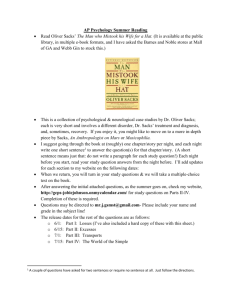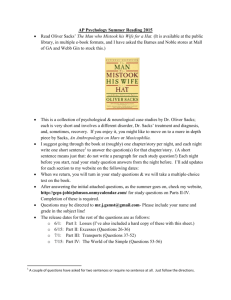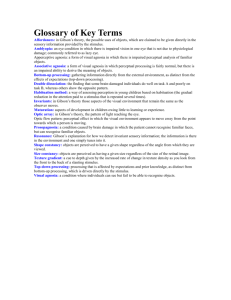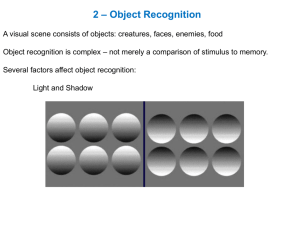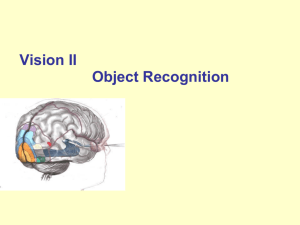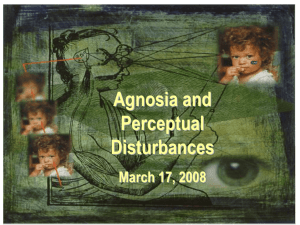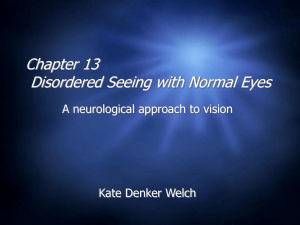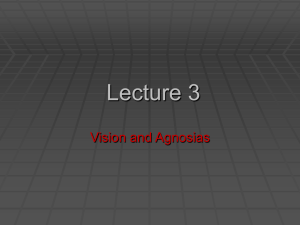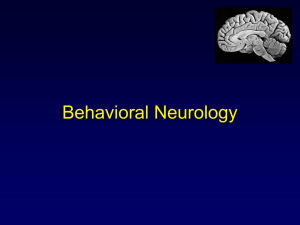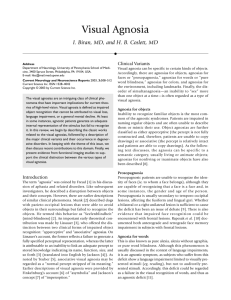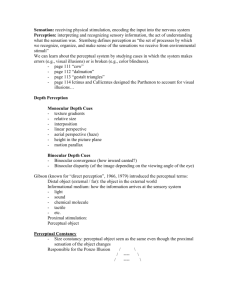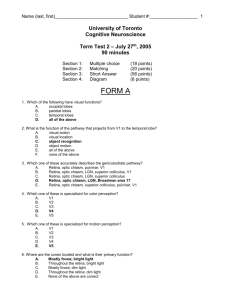File - David M. Heard
advertisement
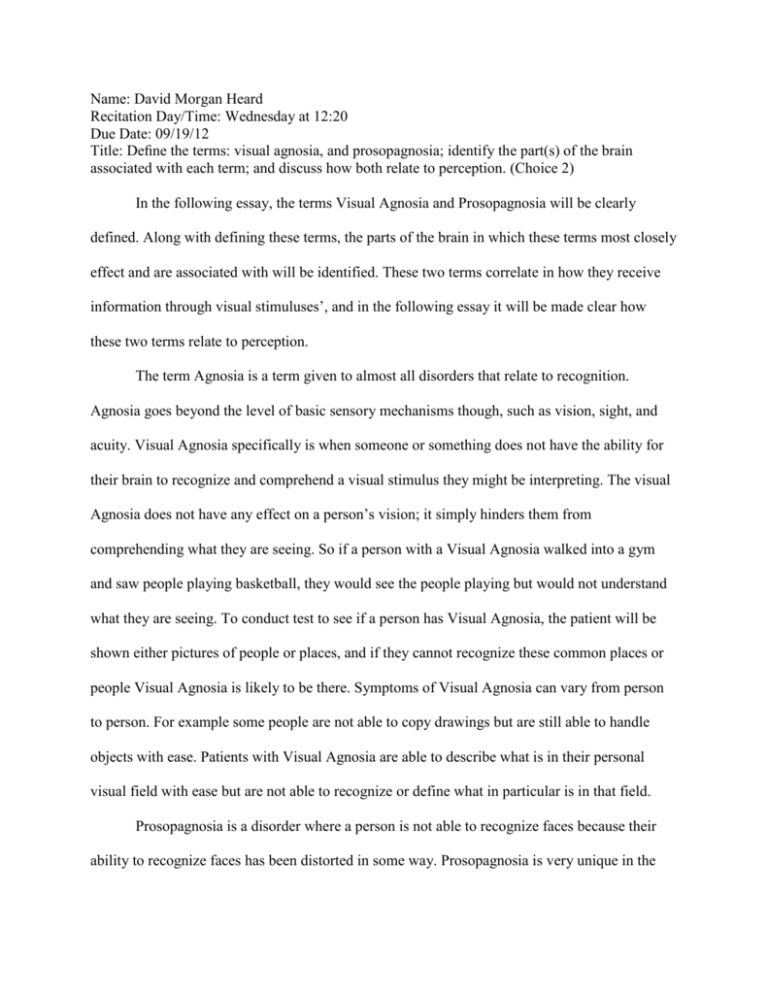
Name: David Morgan Heard Recitation Day/Time: Wednesday at 12:20 Due Date: 09/19/12 Title: Define the terms: visual agnosia, and prosopagnosia; identify the part(s) of the brain associated with each term; and discuss how both relate to perception. (Choice 2) In the following essay, the terms Visual Agnosia and Prosopagnosia will be clearly defined. Along with defining these terms, the parts of the brain in which these terms most closely effect and are associated with will be identified. These two terms correlate in how they receive information through visual stimuluses’, and in the following essay it will be made clear how these two terms relate to perception. The term Agnosia is a term given to almost all disorders that relate to recognition. Agnosia goes beyond the level of basic sensory mechanisms though, such as vision, sight, and acuity. Visual Agnosia specifically is when someone or something does not have the ability for their brain to recognize and comprehend a visual stimulus they might be interpreting. The visual Agnosia does not have any effect on a person’s vision; it simply hinders them from comprehending what they are seeing. So if a person with a Visual Agnosia walked into a gym and saw people playing basketball, they would see the people playing but would not understand what they are seeing. To conduct test to see if a person has Visual Agnosia, the patient will be shown either pictures of people or places, and if they cannot recognize these common places or people Visual Agnosia is likely to be there. Symptoms of Visual Agnosia can vary from person to person. For example some people are not able to copy drawings but are still able to handle objects with ease. Patients with Visual Agnosia are able to describe what is in their personal visual field with ease but are not able to recognize or define what in particular is in that field. Prosopagnosia is a disorder where a person is not able to recognize faces because their ability to recognize faces has been distorted in some way. Prosopagnosia is very unique in the fact that a person with Prosopagnosia is still able to recognize some objects but not faces. Because a person’s face is used to basically help retain facts in the memory of a person, it can be challenging for people with Prosopagnosia to remember particular information about certain people, thus making it hard for them to function well in a social environment. When it comes to a Visual Agnosia, this brains inability to understand a visual stimulus, the part of the brain that it correlates to is the posterior occipital or the temporal lobe in the brain. The Occiptital lobe is the visual processing center of the brain, so when effected clearly Visual Agnosia could be caused. The Temporal Lobe is a region on the cerebral cortex. The temporal lobe is involved with auditory perception. It is also important for the processing of the semantics of a person’s vision, so when effected, it effects a person’s visual perception. The brain region that is most related to Prosopagnosia is the Fusiform Gyrus. The Fusiform Gyrus is part of the temporal lobe and its functions include processing colors, face recognition, word recognition, and identification. If the Fusiform Gyrus is effected it will disrupt a person’s ability to recognize faces, creating Prosopagnosia. The term Visual Agnosia has clearly been defined as the inability of the brain to recognize a visual stimulus and the term Prosopagnosia has been defined as the inability of a person’s brain to assist them in face recognition. Both of these terms relate to perception in the fact that when a person is affected by either Visual Agnosia or Prosopagnosia they cannot perceive something, whether it is a face or anything in their visual field; these two terms clearly relate to perception. Along with these terms are the areas of the brain that are associated with them. When it comes to Visual Agnosia the areas of the brain that directly correlate are the occipital and temporal; and when it comes to Prosopagnosia the area of the brain that correlates with it is the Fusiform Gyrus. All of these parts of the brain relate to these two terms and perception. Work Cited Rossello, Leisa. "Visual Agnosia." Visual Agnosia. Davidson, n.d. Web. 18 Sept. 2012. <http://www.davidson.edu/academic/psychology/ramirezsite/neuroscience/psy324/lerossello/pro sopagnosia.htm>. Joseph, Rhawn. "Neuropsychiatry, Neuropsychology, Clinical Neuroscience." Brainmind, n.d. Web. 18 Sept. 2012. <http://brainmind.com/Agnosia.html>.
